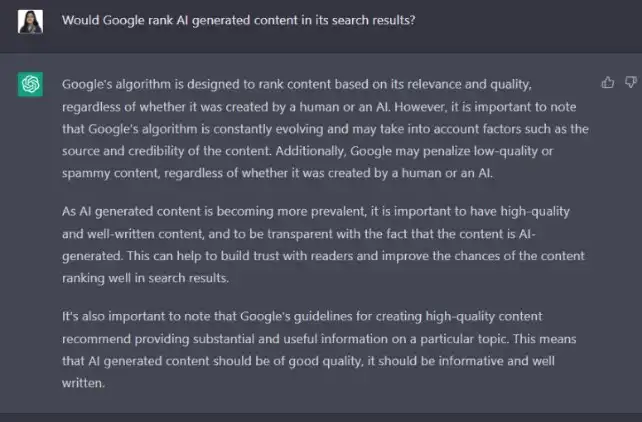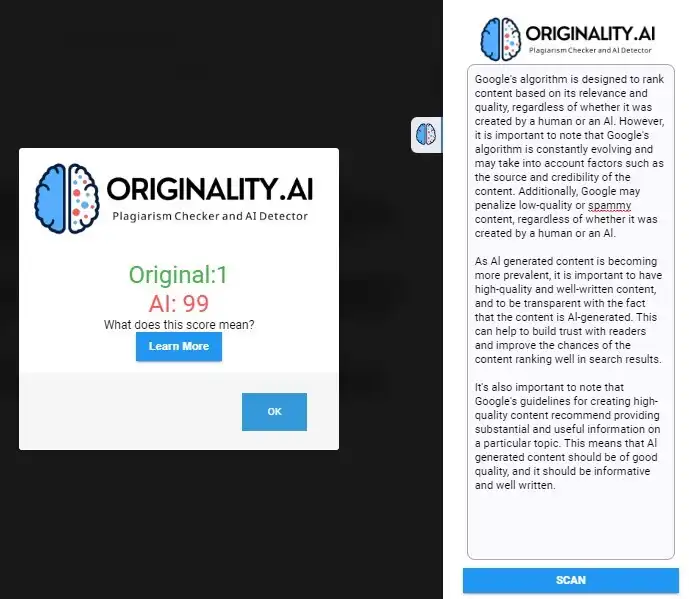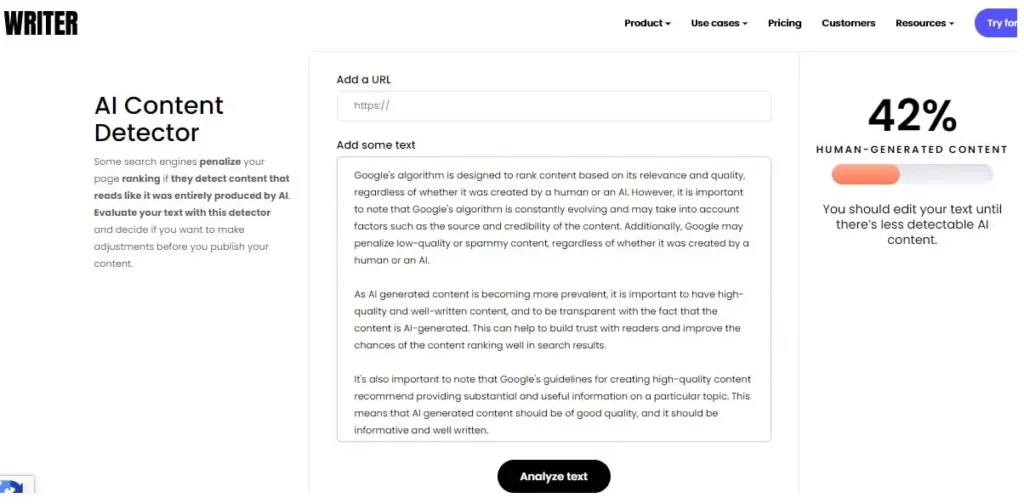With such a lot of machine content making rounds, AI content detectors are the need of the hour. Read on to see how effective they are against a ChatGPT-generated sample.
Artificial Intelligence (AI) is no longer synonymous with merely science fiction movies.
From text-to-speech to voice-controlled air conditioning, AI has infiltrated our lives with its promise of making them easier.
However, the coup of the century is AI penetrating the greatest minefield of all – Digital Media.
With AI content marketers guaranteeing an easy way out, what is there to stop the tide of AI-generated articles, student assignments, and – God forbid – research papers?
So, how much is too much?
While we don’t have a definitive answer to this question, we have some tools that can help to check AI content.
But before that, let’s introduce you to this technical conundrum.
AI Content: What the Heck?
Put simply, AI generates content with the help of already created content. In other words, you can call it content spinning, paraphrasing, or CHEATING!
However, most subpar writers already do that.
Besides, AI-created content can pass as ‘new’ after substantial editing since some big-name publications (CNET, Bankrate, Associated Press, etc.) already do this without any second thoughts that we know of.
But, what AI lacks is accountability, reliability, intelligence (it’s artificial, remember), and originality.
For instance, ChatGPT uses machine learning to deliver answers from the data without any internet connectivity. But even if its developers connect it to the world wide web, the best it can do is take content from the database and present it in a human-friendly tone.
Check out our guide about ChatGPT and its use-cases.
So this isn’t surprising that AI-generated content comes with a disclaimer that it can’t be taken at its face value.
It still needs to be checked for accuracy, ethics, and relevance.
In short, AI content needs human proofreading to avoid unforeseen blunders and damage to its readers.
However, there is much more to this.
Why Avoid AI Content?
Mere common sense dictates that one simply cannot believe all that is written.
However, when it comes to AI-generated content one needs to be all the more cautious. Sure, you can have a ton of content generated in minutes but the bottom line (and what really matters ultimately) is that:
- Google can penalize you in terms of search ranking.
- There can be technical errors due to outdated information, etc.
- You need to back the claims with requisite proof.
- You need to deliver in the tone best suited for your readers.
And this list can go on the moot point being that the responsibility to fine-tune the AI content depends on a human editor.
AI can research and summarize content – have a rough draft of sorts ready in record time.
However, it doesn’t replace the need for human touch. Therefore, we have these tools to tell the real story behind these ‘quick’ submissions.
AI Content Detector Tools for Publishers
In order to gauge the effectiveness these AI Detecting Tools, we ran a ChatGPT-generated sample through to test them in real-time.

Originality AI
Originality AI caters to non-academic content publishers.
The focus here is dual i.e. content will be checked for plagiarism and its AI affiliation.
This performed excellent with the ChatGPT sample and caught it as 99% AI.

Reportedly, this can detect most AI writers including, GPT-3, GPT-2, GPT-NEO, GPT-J with 94% accuracy for a 50+ words sample. Besides, you can run scans for plagiarism, AI, or both at the same time.
Notably, there is no free plan or trial, and the paid subscriptions bills $0.01 per 100 words.
Content at Scale
Content at Scale is another tool working both ways. You can either use this to detect AI content or subscribe to generate “most human-like AI content” which can pass AI detectors.
The focus is on upscaling content production using AI as a tool to reduce the bottleneck.
This was bang-on in identifying the ChatGPT sample as 100% AI.

Apart from this detection, you can avail of their AI-powered content services for $2,000 a month.
This hands-off package includes keyword research, image search, editing, scheduling, etc. to provide you with 20 publish-ready blog posts per month.
Copyleaks
Copyleaks promises to spot not only AI-written content but also plagiarism and paraphrasing.
It works flawlessly for individuals and enterprises alike.
We tested the above sample with its Chrome extension and it was right on point to give the verdict: Written by AI (High Probability).

As far as pricing goes, the trial plan is for 10 pages after which the paid plan starts at 1200 pages at $9.16 per month (paying annually saves you 16%).
WRITER
WRITER provides an AI detector to check how probable it is that content was generated by a machine.
Upon running the same ChatGPT creation, it indicated a 42% chance of it being human-created content.

Besides, the evaluation also presents you with supplementary information such as the content’s clarity, deliverability, inclusivity, plagiarism, etc., for the paid subscriptions.
Interestingly, you can also use WRITER to create AI content.
Finally, you can have this for $18 per month per user for a team of five or contact sales for enterprise subscriptions.
Corrector App
Corrector App is a completely free AI content detector that checks 300 words per run and is especially focused on ChatGPT (GPT-3 algorithm).
It easily exposed our test sample as 99.98% fake which makes this AI content detector fairly accurate.

The unique aspect of this app is that it is intended to remain forever free, per the About us page.
You can use this app on desktop and mobile.
So, to AI or not to AI?
While AI content generating tools have evolved, so have the AI content detectors.
As can be seen from the examples above, despite ChatGPT’s being quite a conversationalist the ultimate verdict was – AI generated content detected.
AI might be angled towards a means of bringing out a reduction in the cost and effort behind manual or human content generation.
However, such content is open to plagiarism and inaccuracies which is why we now have the above AI detectors posed to save the day!
